Input interpretation

tetrachloroethylene
Chemical names and formulas

formula | CCl_2=CCl_2 Hill formula | C_2Cl_4 name | tetrachloroethylene IUPAC name | 1, 1, 2, 2-tetrachloroethylene alternate names | 1, 1, 2, 2-tetrachloroethene | 1, 1, 2, 2-tetrachloroethylene | carbon bichloride | PCE | perchloroethylene | tetrachloroethene mass fractions | C (carbon) 14.5% | Cl (chlorine) 85.5%
Lewis structure
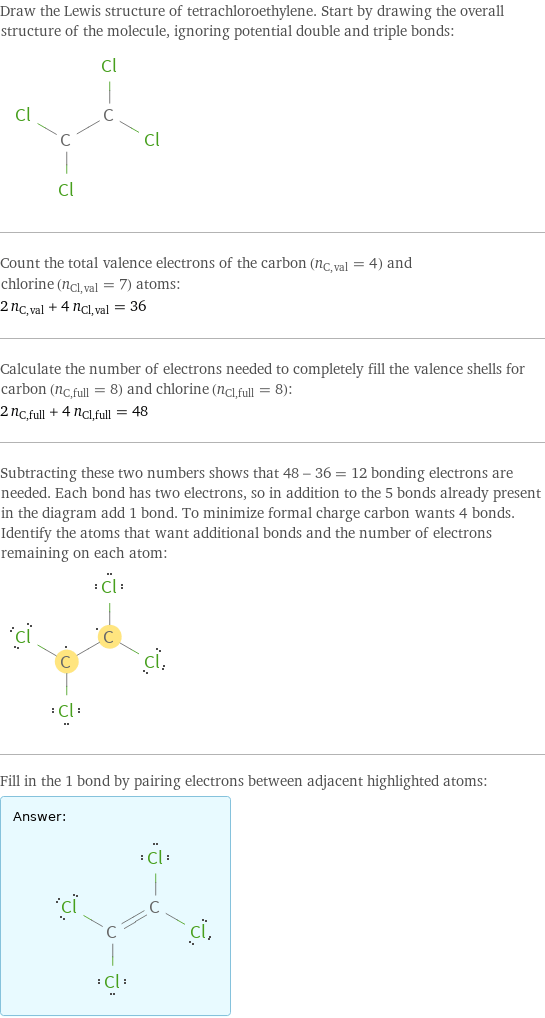
Draw the Lewis structure of tetrachloroethylene. Start by drawing the overall structure of the molecule, ignoring potential double and triple bonds: Count the total valence electrons of the carbon (n_C, val = 4) and chlorine (n_Cl, val = 7) atoms: 2 n_C, val + 4 n_Cl, val = 36 Calculate the number of electrons needed to completely fill the valence shells for carbon (n_C, full = 8) and chlorine (n_Cl, full = 8): 2 n_C, full + 4 n_Cl, full = 48 Subtracting these two numbers shows that 48 - 36 = 12 bonding electrons are needed. Each bond has two electrons, so in addition to the 5 bonds already present in the diagram add 1 bond. To minimize formal charge carbon wants 4 bonds. Identify the atoms that want additional bonds and the number of electrons remaining on each atom: Fill in the 1 bond by pairing electrons between adjacent highlighted atoms: Answer: | |
3D structure
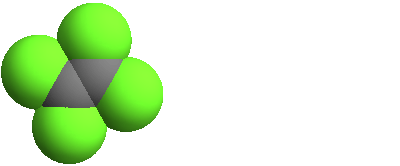
3D structure
Basic properties
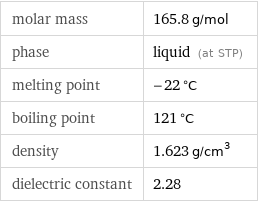
molar mass | 165.8 g/mol phase | liquid (at STP) melting point | -22 °C boiling point | 121 °C density | 1.623 g/cm^3 dielectric constant | 2.28
Liquid properties (at STP)

density | 1.623 g/cm^3 vapor pressure | 13 mmHg dynamic viscosity | 8.44×10^-4 Pa s (at 25 °C) surface tension | 0.03174 N/m refractive index | 1.505 UV cutoff wavelength | 290 nm
Units
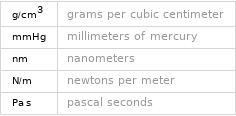
Thermodynamic properties
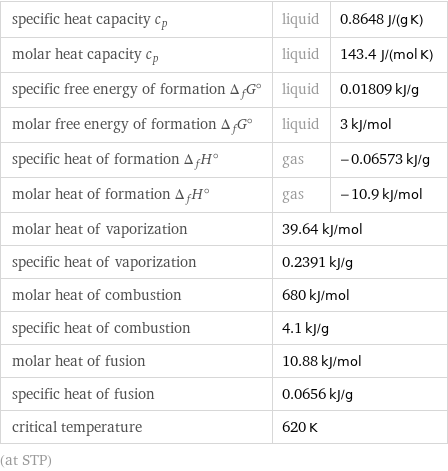
specific heat capacity c_p | liquid | 0.8648 J/(g K) molar heat capacity c_p | liquid | 143.4 J/(mol K) specific free energy of formation Δ_fG° | liquid | 0.01809 kJ/g molar free energy of formation Δ_fG° | liquid | 3 kJ/mol specific heat of formation Δ_fH° | gas | -0.06573 kJ/g molar heat of formation Δ_fH° | gas | -10.9 kJ/mol molar heat of vaporization | 39.64 kJ/mol | specific heat of vaporization | 0.2391 kJ/g | molar heat of combustion | 680 kJ/mol | specific heat of combustion | 4.1 kJ/g | molar heat of fusion | 10.88 kJ/mol | specific heat of fusion | 0.0656 kJ/g | critical temperature | 620 K | (at STP)
Chemical identifiers
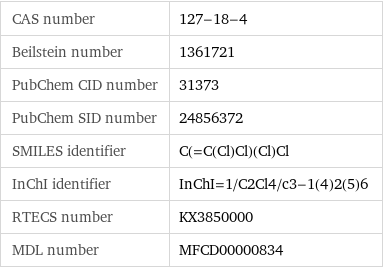
CAS number | 127-18-4 Beilstein number | 1361721 PubChem CID number | 31373 PubChem SID number | 24856372 SMILES identifier | C(=C(Cl)Cl)(Cl)Cl InChI identifier | InChI=1/C2Cl4/c3-1(4)2(5)6 RTECS number | KX3850000 MDL number | MFCD00000834
NFPA label

NFPA label
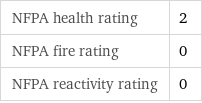
NFPA health rating | 2 NFPA fire rating | 0 NFPA reactivity rating | 0
Safety properties

flash point | 45 °C

DOT hazard class | 6.1 DOT numbers | 1897
Toxicity properties
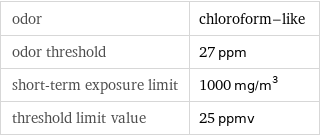
odor | chloroform-like odor threshold | 27 ppm short-term exposure limit | 1000 mg/m^3 threshold limit value | 25 ppmv

long-term exposure limit | 335 mg/m^3 (over 8 hours) RTECS classes | agricultural chemical and pesticide | tumorigen | drug | mutagen | reproductive effector | human data | primary irritant